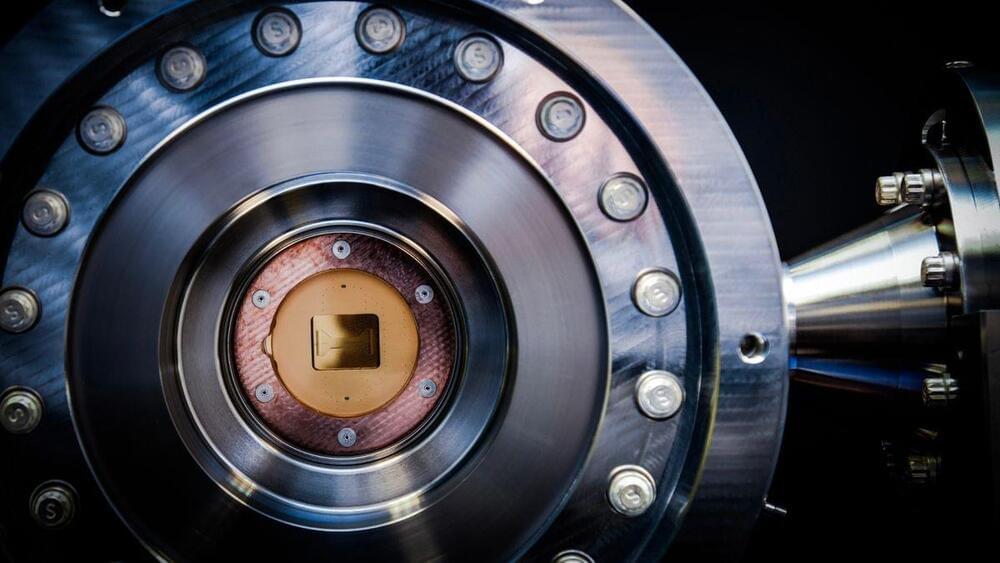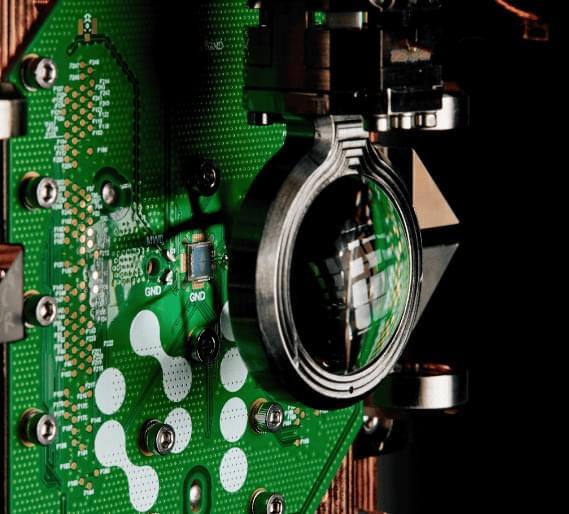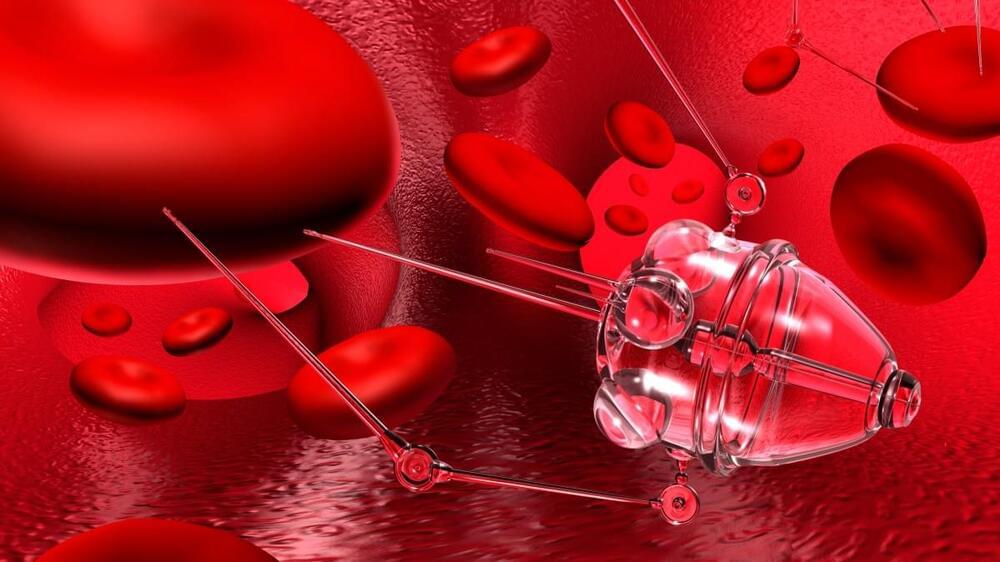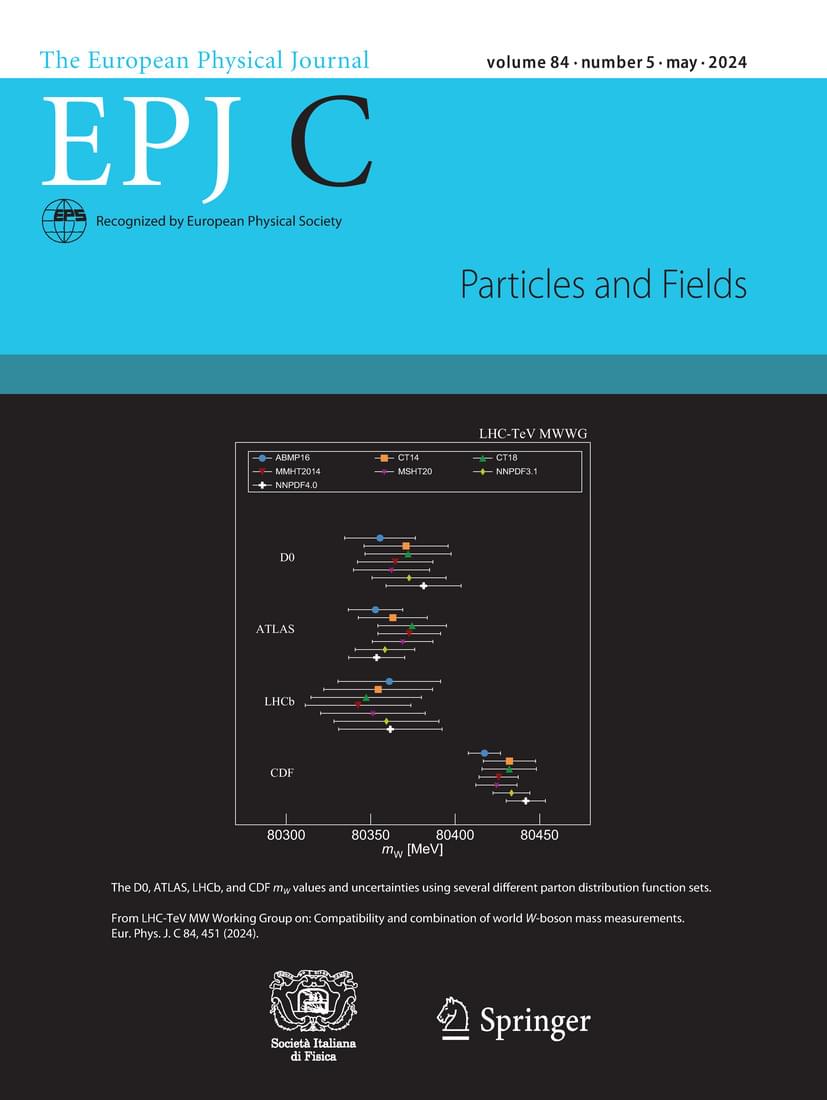Spontaneous symmetry breaking and emergent polar order are key to liquid crystal phase behaviour. This study reveals two new polar liquid states with lamellar structures, providing novel insights into electrical analogues of magnetic spin structures.
The Standard Model of Particle Physics encapsulates nearly everything we know about the tiny quantum-scale particles that make up our everyday world. It is a remarkable achievement, but it’s also incomplete — rife with unanswered questions. To fill the gaps in our knowledge, and discover new laws of physics beyond the Standard Model, we must study the exotic phenomena and states of matter that don’t exist in our everyday world. These include the high-energy collisions of particles and nuclei that take place in the fiery heart of stars, in cosmic ray events occurring all across earth’s upper atmosphere, and in particle accelerators like the Large Hadron Collider (LHC) at CERN or the Relativistic Heavy Ion Collider at Brookhaven National Laboratory.
Computer simulations of fundamental physics processes play an essential role in this research, but many important questions require simulations that are much too complex for even the most powerful classical supercomputers. Now that utility-scale quantum computers have demonstrated the ability to simulate quantum systems at a scale beyond exact or “brute force” classical methods, researchers are exploring how these devices might help us run simulations and answer scientific questions that are inaccessible to classical computation. In two recent papers published in PRX Quantum (PRX)1 and Physical Review D (PRD)2, our research group did just that, developing scalable techniques for simulating the real-time dynamics of quantum-scale particles using the IBM® fleet of utility-scale, superconducting quantum computers.
The techniques we’ve developed could very well serve as the building blocks for future quantum computer simulations that are completely inaccessible to both exact and even approximate classical methods — simulations that would demonstrate what we call “quantum advantage” over all known classical techniques. Our results provide clear evidence that such simulations are potentially within reach of the quantum hardware we have today.
The range of threats, they say, include “attackers exploit[ing] this vulnerability to gain unauthorized access, execute arbitrary code, and cause substantial damage without any user interaction. The absence of authentication requirements makes it particularly dangerous, as it opens the door to widespread exploitation.”
The repeated reference to “trusted senders” in this warning is important. This vulnerability only carries a zero click threat when an email is received from a trusted source. If the sender is unknown, then the user would need to click to execute. That said, if the problem for an attacker is now spoofing emails from trusted sources that’s a very low bar in today’s world of industrial scale business email compromise.
A new paper finds that combining photovoltaics with crop farming can result in revenue gains over the life of a PV system at a diverse range of locations in the United Kingdom. Researcher Aritra Ghosh tells pv magazine that the benefits of agrivoltaics are ‘multifaceted.’
The 56-qubit H2-1 computer has broken the previous record in the ‘quantum supremacy’ benchmark first set by Google in 2019.
The call and text message records from mid-to-late 2022 of tens of millions of AT&T cellphone customers and many non-AT&T customers were exposed in a massive data breach, the telecom company revealed Friday.
AT&T said the compromised data includes the telephone numbers of “nearly all” of its cellular customers and the customers of wireless providers that use its network between May 1, 2022 and October 31, 2022.
The stolen logs also contain a record of every number AT&T customers called or texted – including customers of other wireless networks – the number of times they interacted, and the call duration.
Over the last year, he has also ramped up work on what will happen if he gets there.
Mr. Musk, 53, has directed SpaceX employees to drill into the design and details of a Martian city, according to five people with knowledge of the efforts and documents viewed by The New York Times. One team is drawing up plans for small dome habitats, including the materials that could be used to build them. Another is working on spacesuits to combat Mars’s hostile environment, while a medical team is researching whether humans can have children there. Mr. Musk has volunteered his sperm to help seed a colony, two people familiar with his comments said.
Oxford Ionics reported that the company’s newest chips can provide over twice the performance of previous records.
You won’t have a job, but you will beat illness, boost your IQ and cheat death, says a futurologist.
Numerous open questions in gravity theory become apparent from observations in cosmology, such as the cosmic microwave background radiation [1, 2, 3, 4, 5, 6], the large scale structure [7, 8], gravitational waves [9, 10] and supernovae [11]. In order to describe these observations, one needs to study the evolution of both the universe as a whole, modeled by a homogeneous and isotropic background geometry and matter distribution, as well as perturbations of this background. A thorough understanding of such cosmological perturbations and their dynamics imposed by the gravitational interaction is therefore an important necessity for describing and explaining the modern observations in cosmology.
Cosmological perturbations in gravity have been studied for a long time, starting with the case of (pseudo-)Riemannian spacetime geometry, which is employed by the standard formulation of general relativity and the most well-known class of its extensions, in which the gravitational interaction is attributed to the curvature of the metric-compatible, torsion-free Levi-Civita connection [,13,14,15]. This task is significantly simplified by the fact by understanding how perturbations transform under gauge transformations, i.e., infinitesimal diffeomorphisms which retain the nature of the spacetime geometry as a small perturbation of a cosmologically symmetric background. From these gauge transformations, one can derive a set of gauge-invariant perturbation variables, which describe the physical information contained in the metric perturbations as well as the perturbations of the matter variables, so that they become independent of the arbitrary gauge choice. The resulting gauge-invariant perturbation theory is one of the cornerstones of modern cosmology [16,17,18,19].
Despite its overwhelming success in describing observations from laboratory scales up to galactic scales, general relativity is challenged by the aforementioned open questions, as well as the open question how it can be reconciled with quantum theory. This situation motivates the study of modified gravity theories [20]. While numerous theories depart from the standard formulation of general relativity in terms of the curvature of the Levi-Civita connection of a Riemannian spacetime, also other formulations in terms of the torsion or nonmetricity of a flat connection exist and can be used as potential starting points for the construction of modified gravity theories [21, 22]. Focusing on general relativity alone, one finds that these formulations are equivalent in the sense that they lead to field equations which possess the same solutions for the metric irrespective of the geometric properties of the connection under consideration…









